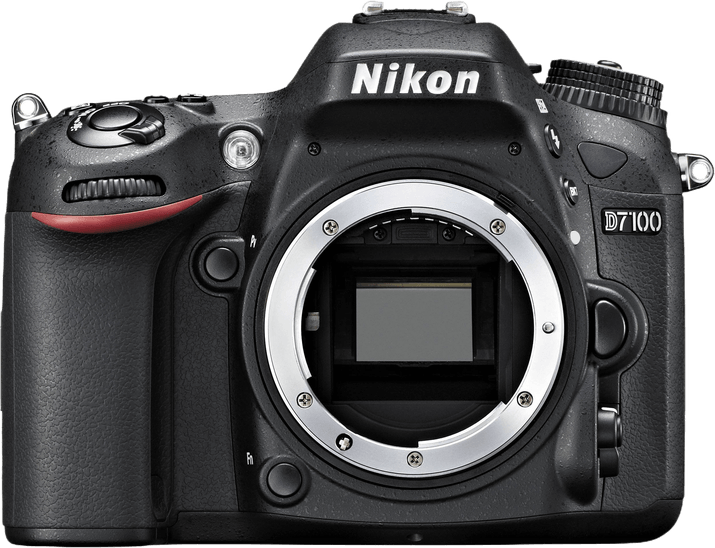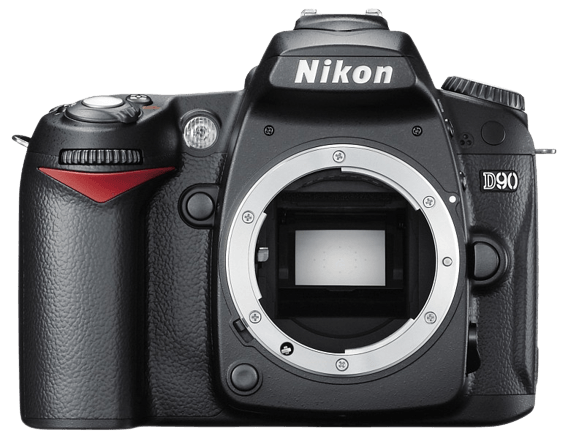Nikon D7100 vs D90 Comparison
Nikon D7100

Nikon D90

The Nikon D7100 clearly outperforms the Nikon D90 with a score of 65/100 compared to 44/100. Both cameras are DSLRs and share some common specifications, such as their similar size and weight, with the D7100 measuring 136 x 107 x 76mm and weighing 1.69lbs, while the D90 measures 132 x 103 x 77mm and weighs 1.55lbs.
The D7100 has the advantage of being a more recent model, released in 2013, and originally priced at $1200. This newer technology contributes to its higher score. On the other hand, the D90, released in 2008 with a launch price of $1235, is a slightly older model, which may explain its lower score.
Despite the age difference, both cameras have their own merits. The D7100’s improved technology results in better performance, while the D90’s slightly smaller size and lighter weight offer a more compact option for photographers. Ultimately, the choice between the two depends on the individual’s preferences and priorities.
Nikon D7100 vs D90 Overview and Optics
The Nikon D7100 emerges as the winner in the optics comparison with a score of 67/100, outperforming the Nikon D90, which scored 46/100. Both cameras share some common specifications, including the CMOS sensor type, APS-C sensor size, Nikon F DX lens mount, and the lack of image stabilization.
The D7100 excels with its higher megapixel count of 24.1 compared to the D90’s 12.3, allowing for greater image resolution and detail. Additionally, the D7100’s shooting speed of 6 frames per second surpasses the D90’s 4.5, providing faster capture of action shots. The D7100 also benefits from an improved Expeed 3 processor, which enhances image processing and overall performance. Its DXOMARK sensor score of 83 further highlights the superiority of the D7100’s sensor quality over the D90’s score of 73.
On the other hand, the Nikon D90 holds its ground with its lower price point and simpler interface, which may be more suitable for beginner photographers. However, its lower specifications in megapixels, shooting speed, and sensor quality make it less competitive compared to the D7100.
Taking all factors into account, the Nikon D7100 stands out as the better camera in terms of optics, offering higher image resolution, faster shooting speed, and an overall better sensor. While the Nikon D90 may still appeal to those on a budget or seeking a more straightforward camera, the D7100’s superior specifications make it the clear winner in this comparison.
Nikon D7100 vs D90 Video Performance
When comparing the Nikon D7100 and Nikon D90 in terms of video capabilities, it is important to note that the Nikon D90 does not have video functionality. This means that any video-related comparisons or evaluations can only be made regarding the Nikon D7100.
The Nikon D7100 has a video score of 57 out of 100. It is capable of recording Full HD videos with a maximum resolution of 1920 x 1080 pixels. The camera also offers a maximum video frame rate of 30 frames per second. Additionally, the Nikon D7100 features built-in time-lapse functionality, allowing users to create time-lapse videos without the need for external equipment or software.
Comparing the video capabilities of these two cameras highlights a clear difference between them. The Nikon D7100 offers a range of video features, while the Nikon D90 lacks any video functionality. This distinction may be an important factor for those considering which camera to purchase, especially if video recording is a priority.
Nikon D7100 vs D90 Features and Benefits
The Nikon D7100 comes out on top in the features category, with a score of 59 out of 100, while the Nikon D90 scores 41 out of 100. Both cameras share some common specifications, such as the absence of a touchscreen, flip screen, and GPS. Neither camera has Bluetooth capabilities.
The D7100’s advantages lie in its higher screen resolution and the presence of WIFI. With a screen size of 3.2 inches and a resolution of 1,228,800 dots, the D7100 offers a clearer and more detailed display compared to the D90’s 3-inch screen with a resolution of 920,000 dots. The inclusion of WIFI in the D7100 allows for easier sharing and transfer of photos, a feature the D90 lacks.
The D90 does not have any specific advantages over the D7100 in terms of features. It shares the same limitations as the D7100, lacking a touchscreen, flip screen, GPS, and Bluetooth. The D90’s lower feature score is due to its lower screen resolution and lack of WIFI.
To sum up, the Nikon D7100 is the superior camera in terms of features. Its higher screen resolution provides a better-quality display, and the addition of WIFI enables easier photo sharing and transfer. The Nikon D90, on the other hand, shares the same limitations as the D7100 but does not offer any additional advantages. The D7100’s higher feature score reflects its enhanced capabilities compared to the D90.
Nikon D7100 vs D90 Storage and Battery
The Nikon D7100 outperforms the Nikon D90 in storage and battery with a score of 76/100 compared to the D90’s 37/100. Both cameras share some storage and battery specifications, such as the memory cards accepted (SD/SDHC) and the lack of USB charging.
The D7100’s superiority is evident in its two memory card slots, which provide more storage capacity, and compatibility with SDXC cards, allowing for faster and larger storage. Its battery life is also longer, offering 950 shots compared to the D90’s 850 shots. Furthermore, the D7100 uses the EN-EL15 battery type, which is more efficient.
On the other hand, the D90 has only one memory card slot and does not support SDXC cards. Its battery life is shorter, and it uses the less efficient EN-EL3e battery type. Despite these drawbacks, the D90 still provides a decent performance for casual photographers.
Taking into account the storage and battery aspects, the Nikon D7100 is the clear winner, offering more flexibility and longer battery life for a better shooting experience. The Nikon D90, while not as advanced, remains a viable option for those with less demanding storage and battery needs.
Nikon D7100 vs D90 – Our Verdict
Are you still undecided about which camera is right for you? Have a look at these popular comparisons that feature the Nikon D7100 or the Nikon D90:

